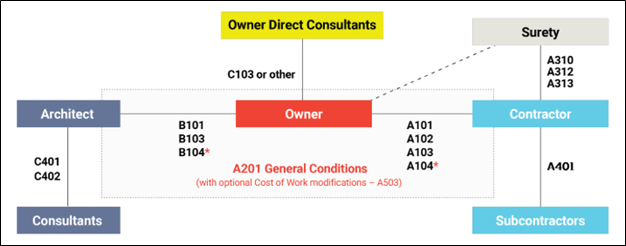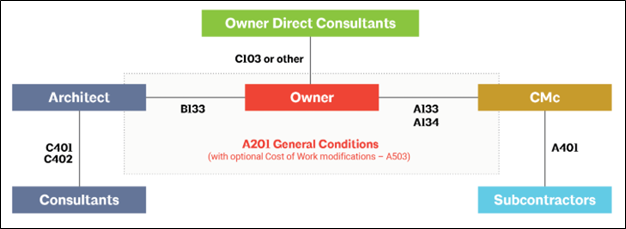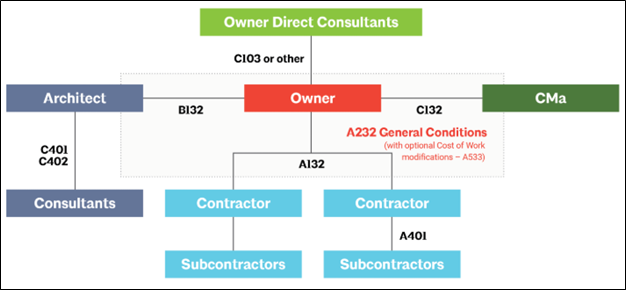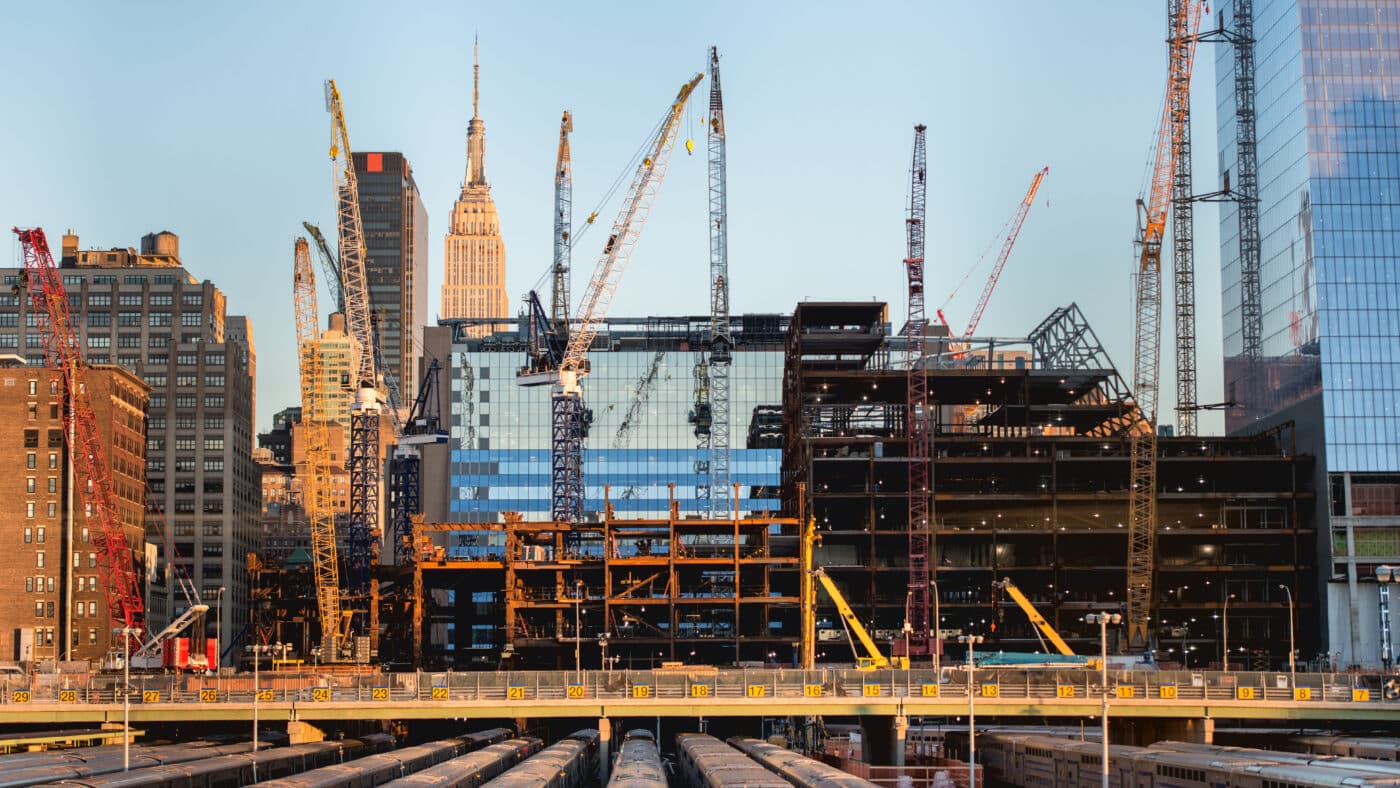Key Differences Between General Contractors and Construction Managers
In the complex world of construction, the terms Construction Manager and General Contractor are often used interchangeably or without explanation, leading to confusion among property owners and even some industry professionals. While these roles share overlapping responsibilities, they serve distinct functions in a construction project. Understanding the differences—and similarities—is crucial for effective project management, successful project outcomes and navigating responsibilities of parties in legal disputes.
In this post, we define the:
- responsibilities, requirements, and key differences of each role
- detail the benefits that each role brings to the construction process
- recommend best practices for managing each role
General Contractor: The Builder on the Ground
A General Contractor (GC) is the party responsible for executing the construction work. Hired under a contract with the owner (as a prime contractor), the GC ensures the project is built according to the plans and contract documents. The GC comes onto a project and executes the design in the construction phase.1
The responsibilities of a GC fall under the AIA Conventional Family of Contracts (AIA A101, A102 and A103) or the Design-Bid-Build method. This method requires completion of one phase before moving onto the next phase, meaning that the GC is hired once design work is 100% complete.

Figure 1. Contract Relationships in the AIA Conventional Family2
Key Responsibilities of the GC:
- Hiring and managing subcontractors
- Procuring materials and overseeing on-site construction activities
- Ensuring compliance with safety regulations and building codes
- Delivering the project per contractual obligations
Real-World Scenario: For a residential apartment complex, a GC might hire electricians, plumbers and HVAC specialists — ensuring work aligns with the contract documents and project timeline. All the design has been done prior to the GC coming onto the project.
Construction Manager: The Coordinator and Planner
A Construction Manager (CM) serves as the central coordinator of the entire construction team.3 The construction management delivery method can be divided into two types:
- a hands-on role (CM-as-Constructor/CMc) or
- as an adviser (CM-as-Adviser/CMa)4
The CMc and CMa delivery methods have their own family of contracts through AIA: the CMc Family and the CMa Family. In both methods, design can be done concurrently with construction and therefore, design is not required to be 100% complete when the CMc or CMa are hired.
CM-as-Constructor (CMc): The Delivery Method with Risk Assumed by the CM5
A CMc delivery method requires the CM to act as both a project manager and a general contractor, combining oversight duties with construction execution, including hiring subcontractors to perform the construction. In this role, the CM assumes significant financial and legal risks related to project cost, schedule and quality adherence. This delivery method is often referred to as CM at Risk.

Figure 2. Contract Relationships in the AIA CMc Family6
Key Features of the CMc Delivery Method:
- Guaranteed Maximum Price (GMP): The CMc may commit to delivering the project within a predetermined budget (the GMP). If costs exceed the GMP for base contract work due to estimating errors, the CMc would absorb the overrun unless changes are made to the project scope. This type of CMc Agreement falls under AIA Contract A133-2019.
- Dual Role: The CMc initially acts as an adviser during pre-construction, providing input on design, constructability and cost. During construction, they transition into a contractor role.
- Contracts: Typically, the CMc signs separate agreements with the owner (as a CM) and with subcontractors (as a general contractor). This contrasts with the role of an CMa who does not sign contracts with subcontractors.
- Risk Exposure: The CMc takes on financial risk, ensuring cost control, schedule control and performance accountability. Since the CMc is takes on the role of the general contractor, they also take the responsibility that the construction of the project will conform with contract documents, code and industry standards.
Advantages of engaging a CMc:
- Combines design and construction expertise early in the project, improving constructability
- Iterative cost estimating provides a better opportunity for scope/budget concurrence
- May provide cost certainty with the GMP
- Reduces the owner’s risk in managing unforeseen costs
Use Case: For a large-scale commercial project like a hospital or office building, a CMc is ideal because they can offer detailed cost estimates during design and manage subcontractors effectively during construction.
CM-as-Adviser (CMa): The Delivery Method where the CM is Pure Adviser7
A CMa delivery method allows the CM to act as an adviser to the owner, without taking on the financial risks of construction execution.8 They focus entirely on advising the owner with respect to the project, ensuring that all parties work effectively toward the owner’s goals. The CMa provides fee-based consulting to the owner and does not directly hold design or construction contracts. The CMa does have overlapping responsibilities shared with the design professional and contractors and is authorized to make important project decisions for the owner. Essentially, the owner hires the CMa as a prime contractor, in addition to other prime contractors responsible for performing the construction.9 The CMa does not hire subcontractors to perform physical work on the project.
For clarification, the CMa enters an AIA C132 contract agreement with the owner and the prime contractors will enter an AIA A132 contract agreement with the owner.

Figure 3. Contract Relationships in the AIA CMa Family10
Key Features of the CMa Delivery Method:
- Adviser Role: The CMa provides advice on budgeting, scheduling, procurement and project execution but does not perform actual construction work. The CMa provides the owner with information and analysis to help the owner determine which contractors may be suitable for the project but does not enter into agreements with these contractors themselves.
- No Contractual Risk: The CMa does not hire contractors; this responsibility remains with the owner or other owner-contracted parties.
- Contracts: The CMa does not hold contracts with contractors or suppliers; its agreement is only with the owner. The owner contracts directly separate contractors for execution of the work.
Advantages of CMa:
- Offers objective oversight without conflicts of interest
- Provides flexible, owner-controlled procurement processes
- Allows the owner to maintain control over contracts and cost decisions
Use Case: In public sector projects like a school or municipal building, a CMa provides oversight to ensure compliance with procurement regulations as well as providing expertise, without assuming contractor duties.
Key Differences at a Glance
| Aspect | CM-as-Constructor | CM-as-Adviser |
| Risk Assumption | Takes on financial and performance risks. | Assumes no contractual risk. |
| Project Role | Acts as both adviser and general contractor. | Acts solely as an adviser. |
| Contracts | Typically signs contracts with subcontractors and often guarantees costs. | Does not sign contracts with contractors. |
| Focus | Balances owner’s interests with construction execution. | Solely advocates for the owner. |
| Cost Certainty | Offers a Guaranteed Maximum Price (GMP). | Only provides a GMP on CM fees. |
| Suitability | Best for complex projects requiring cost certainty. | Ideal for owners wanting full control and unbiased guidance. |
How to Choose Between CMc and CMa
The choice between CM-as-Constructor and CM-as-Adviser project delivery methods depends on project priorities and the owner’s expertise:
- Choose a CMc if cost predictability, streamlined coordination and reduced owner involvement in construction management are priorities.
- Choose a CMa if the owner values full control over contracts, procurement and project decisions while needing expert guidance.
By understanding these distinctions, property owners can better align their project management approach with their goals.
Common Confusions and Overlaps
While these roles are distinct, their functions often overlap, especially in projects where cost or scale necessitate streamlined processes. For instance:
- A CM traditionally handles preconstruction responsibilities while a GC comes onto the project after design is 100% complete. To streamline processes however, a GC may have contractual responsibilities to complete some preconstruction services.
- A CMa is hired purely as an adviser to the owner and does not enter into agreements with contractors where as a CMc will hire subcontractors as part of its role as GC.
- GCs have full responsibility as it pertains to construction execution. A CMc may fill this role under the CMc Family of AIA contracts; however, in the Conventional Family of AIA contracts a GC would act in this role.
Key Differences at-a-Glance
| Aspect | CMc | CMa | GC |
| Primary Role | Acts as both adviser and general contractor. | Acts solely as an adviser. | Builder and executor |
| Hired By | Owner | Owner | Owner or CMc |
| Focus | Balances owner’s interests with construction execution. | Solely advocates for the owner. | Construction execution |
| Involvement Phase | Pre-construction through construction and closeout | Pre-construction through construction and closeout | Construction through closeout |
Why Definitions & Terminology Are Important
Word choice is important, especially in the English language where words can carry more than one meaning. Contracts often contain imprecise words/language that may lead to confusion regarding parties’ responsibilities in construction disputes.
Words such as oversee, supervise, manage, coordinate, advocate, facilitate, perform, execute, administer, etc. are often not explicitly defined within contracts, and common interpretation of the words may vary widely. Accordingly, when retroactively analyzing responsibilities and duties, one must consider and weigh traditional roles, responsibilities and duties, as well as the actions of the parties during the project.
Challenges When Roles Are Misunderstood
Confusion about these roles can lead to inefficiencies, conflicts and even project failures:
- Unclear Authority: When multiple parties assume overlapping responsibilities, decision-making can stall.
- Scope Creep/Scope Gap: Misaligned expectations can lead to costly additions or delays.
- Legal Disputes: Fuzzy contract terms often result in liability disputes among CMs, GCs, designers and owners.
Best Practices for Owners
- Define Roles Early: Clearly outline the responsibilities of each role in contracts.
- Hire Experts: Work with professionals experienced with the complexities of today’s construction industry (such as those at The Vertex Companies, LLC).
- Communicate Effectively: Maintain open lines of communication between all stakeholders.
Ultimately, the role a specific entity plays in a project is dependent on the responsibilities outlined in its contract. The descriptions above are a combination of industry accepted definitions, from entities like the American Institute for Architects (AIA), the American Bar Association (ABA), architecture and construction dictionaries and Vertex’s experience in construction management, general contracting, surety and litigation support. These are subject to change based on the contract documents for a specific project, hence the importance of clear contractual roles and responsibilities.
Why Choose The Vertex Companies, LLC?
As one of the nation’s top AEC firms, The Vertex Companies, LLC excels at navigating complex projects. Whether you need a Construction Manager, assistance in selecting the right General Contractor, Litigation Support, or Surety, our team brings unparalleled expertise to every phase of construction and construction legal disputes.
For more information on how we can better outcomes and help achieve your project goals, contact The Vertex Companies, LLC submit an inquiry. or via phone 888.298.5162 or via email at info@vertexeng.com.
Author: Curtis Grupe
References
- https://learn.aiacontracts.com/articles/what-are-the-key-differences-between-a-construction-manager-and-general-contractor/
- https://help.aiacontracts.com/hc/en-us/articles/1500009275822-Contract-Relationship-Diagrams
- https://learn.aiacontracts.com/contract-doc-pages/27151-construction-manager-as-constructor-cmc-family/
- https://pressbooks.pub/husamalshareef/chapter/chapter-2-construction-management-at-risk-and-not-at-risk
- AIA Contract A133-2019: Standard Form of Agreement Between Owner and Construction Manager as Constructor (Cost Plus with GMP) and AIA Contract A134-2019: Standard Form of Agreement Between Owner and Construction Manager as Constructor (Cost Plus without GMP)
- https://help.aiacontracts.com/hc/en-us/articles/1500009275822-Contract-Relationship-Diagrams
- AIA Contract C132-2019: Standard form of Agreement Between Owner and Construction Manager as Adviser
- https://learn.aiacontracts.com/contract-doc-pages/27161-construction-manager-as-adviser-cma-family
- AIA Contract C132-2019: Standard form of Agreement Between Owner and Construction Manager as Adviser
- https://help.aiacontracts.com/hc/en-us/articles/1500009275822-Contract-Relationship-Diagrams



